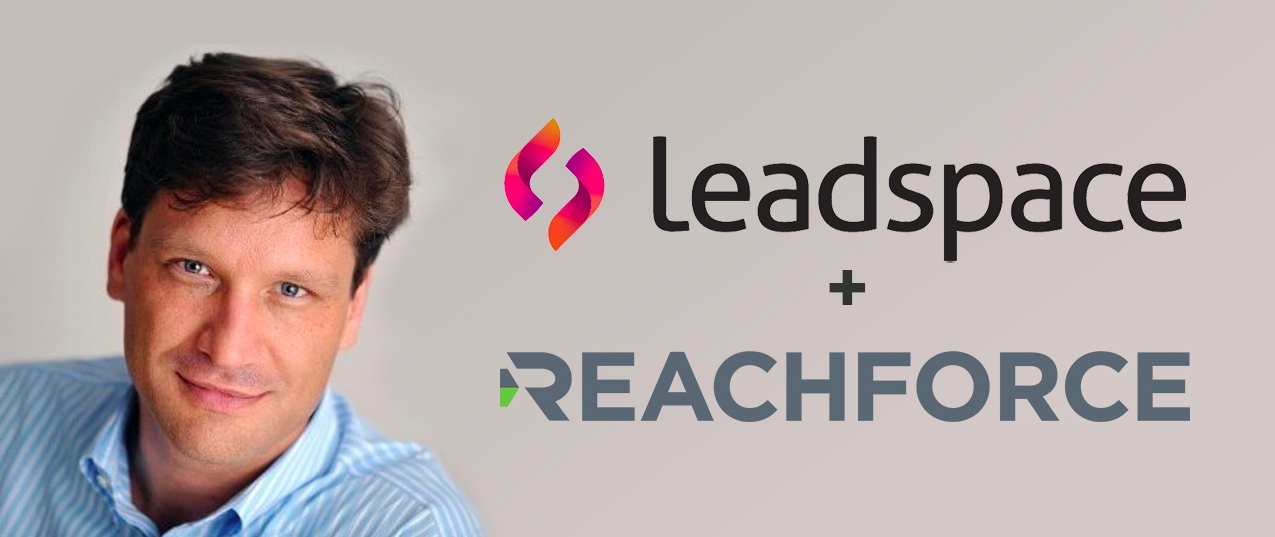Leadspace, a B2B customer data platform (CDP), has acquired ReachForce, a marketing data quality automation solutions provider, for an undisclosed fee.
The acquisition aims to combine both companies’ expertise to better power customers’ data-driven sales and marketing efforts by increasing Leadspace’s offerings, strengthening its team and expanding its growing customer community.
Leveraging its SmartSuite solution, ReachForce enables its customers to access the extensive set of data sources and signals on the Leadspace CDP. Users will also be able to use Leadspace’s advanced AI and analytics offerings for predictive and persona modeling and scoring.
In an exclusive interview with Demand Gen Report, Doug Bewsher, CEO of Leadspace, shares his insights on the acquisition, as well as how it will impact the companies and their customers.
Demand Gen Report: Why did you decide to acquire ReachForce? Where exactly will ReachForce “sit” in Leadspace’s CDP offering?
Doug Bewsher: We started the discussion with ReachForce earlier this year, given the recent incredible interest in CDPs and our compatible offerings. Over the last 12 months in particular, we’ve heard a lot about how B2B teams are looking to break down the silos and have a source and channel-agnostic solution for managing and drawing insights from their customer data. Leadspace and ReachForce have both been focusing on solving these problems from different angles.
ReachForce has its best-in-class SmartForms product, which is a key way that customers build an understanding of their customers, as well as SmartSuite, which provides a real-time data cleansing and management service. Combined with Leadspace’s best-in-class B2B customer data platform, there is a definite complementary and additive effect. SmartForms will become one of the activation products for Leadspace, and we will work over the next [several] months to combine the best of both data management platforms to provide a single end-to-end solution for B2B CDP.
DGR: How does this impact Leadspace’s competitive positioning in the space? And how does Leadspace stand out against other CDPs from other notable players like Salesforce and Oracle?
Bewsher: Together, Leadspace and ReachForce will be the largest AI-driven CDP in the market for B2B companies.
There has been a lot of talk regarding CDPs. However, the large software platforms are still mostly promising a little feature attached to their core offering. Even where there are offerings, they tend to be data aggregation platforms versus true AI-driven customer data platforms. To this point, much of the focus in the CDP category has been on solving B2C problems versus solving the unique data challenges in B2B.
Both Leadspace and ReachForce have been working for 10 years to solve the CDP problem, specifically in B2B, with customers like AMEX, Microsoft, Staples, HPE (and 200 others). We were recently named a “leader” by Forrester in the B2B customer data platform space, and we feel that this acquisition puts us in an even stronger leadership position.
DGR: How will this affect Leadspace and ReachForce customers? And will ReachForce operate independently or be folded into Leadspace?
Bewsher: ReachForce will become part of Leadspace, and we will operate both as a single company under the Leadspace brand.
In the near term, nothing will change for customers. However, we are working hard to quickly (in the next six months) bring both platforms together, offering all the customer the benefits of both platforms.
DGR: There’s been a lot of buzz in the B2B space regarding CDPs. Where do you see them sitting in the B2B martech ecosystem in years to come?
Bewsher: The sales and marketing tech landscape has evolved from capturing customer data in a “system of record,” to customer process management in “systems of engagement,” to now customer insights and recommendations in “systems of intelligence.” However, companies are realizing that it’s impossible to get to that “system of intelligence” level today when they’re stuck in vendor-specific “system of engagement” silos (whether CRM, MAP, ABM or wherever). They’re realizing that a CDP is required to provide a single customer view and deliver the intelligence about how to best engage in order to make the engagement platform more effective. This will be the battlefield of the next decade.
Many have tried to solve the challenge with data warehouses or data marts that they build internally. But clients are increasingly seeing that while this may be useful for internal reporting and stewardship, when it comes to real-time sales and marketing use cases that evolve rapidly, they require a full-featured CDP that comes packaged with the right data, can be tailored for each customer’s needs and can be up and running in weeks. So, I believe that CDPs in B2B will become a key component of the sales and marketing stack to complement engagement platforms, which is why there is such interest in the space from both clients and vendors.







